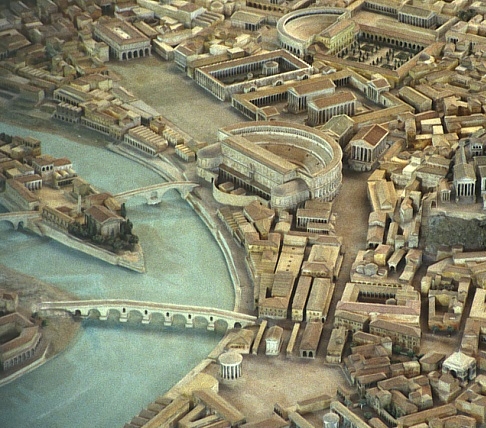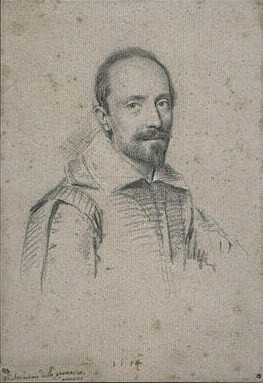|
Santo Stanislao Dei Polacchi
Santo Stanislao dei Polacchi ('' Saint Stanislaus of the Poles'', ), also known as San Stanislao alle Botteghe Oscure, is a Roman Catholic church in Rome, sited on in the Sant'Angelo rione. It is the national church of Poland in Rome. History It is on the site of the medieval church ''San Salvatore in pensilis'' de Sorraca,Referring to a family of that name built on the remains of the Circus Flaminius (and recorded in several documents between 1174 and 1209). An inscription now housed in the entrance of the Palazzo Busiri on via Aurora (all that remains of the medieval church) refers to this church's rebuilding being completed on 28 October 1285 "per venerabilem Hieronymum episcopum Prenestinum". Pope Gregory XIII granted the church to the Polish cardinal Stanislaus Hosius, who completely rebuilt the church in 1580 – it became Poland's national church in Rome, re-dedicated to the country's patron saint, Stanislaus of Kraków. Its present appearance dates to its rebuilding in ... [...More Info...] [...Related Items...] OR: [Wikipedia] [Google] [Baidu] |
Sant'Angelo (rione Of Rome)
Sant'Angelo is the 11th ''rioni of Rome, rione'' of Rome, Italy, located in Municipio I. Often written as ''rione XI - Sant'Angelo'', it has a coat of arms with an angel on a red background, holding a palm branch in its left hand. In another version, the angel holds a sword in its right hand and a Weighing scale, scale in its left. Sant'Angelo, the smallest of Rome's rioni, lies along the Tiber river east of Isola Tiberina, Tiber Island. Rioni bordering this district, clockwise from north to south, include Regola (rione of Rome), Regola, Sant'Eustachio (rione of Rome), Sant'Eustachio, Pigna (rione of Rome), Pigna, Campitelli, and Ripa (rione of Rome), Ripa. Sant'Angelo's western border is the river. The rione's terrain is low and flat and, until the construction of the Lungotevere, particularly susceptible to flooding from the river. The historical significance of Sant'Angelo is mainly the result of the presence here of the Roman Ghetto. History Roman Age: ''Circus Flamini ... [...More Info...] [...Related Items...] OR: [Wikipedia] [Google] [Baidu] |
Bishop Of Palestrina
The Roman Catholic Suburbicarian Diocese of Palestrina ( la, Diocesis Praenestina) is a Roman Catholic suburbicarian diocese centered on the comune of Palestrina in Italy. The current bishop of Palestrina is Domenico Sigalini, who from 3 November 2010 until 5 April 2014 was also appointed by Pope Benedict XVI to be the general ecclesiastical assistant of Italian Catholic Action. History Palestrina was looted in 1473. During the 17th century, the comune of Palestrina was the family territory of a number of Italian noble families including the Barberini, Colonna and d'Este families (which regularly intermarried). Members of these families are represented throughout the list of diocese Bishops, especially between 1600 and 1800. Barberini Pope Urban VIII appointed a number of relatives and close supporters to the Palestrina diocese and governmental positions. Bishops To 1000 *Maurus (558) *Sergio (721) *Venanzio 732 *Gregorio 761–767 *Andrea 769–773 *Contantinus 826 *Leone ... [...More Info...] [...Related Items...] OR: [Wikipedia] [Google] [Baidu] |
Christian Hülsen
Christian Karl Friedrich Hülsen (born in Charlottenburg, 29 November 1858; died in Florence, Italy, on 19 January 1935) was a German architectural historian of the classical era who later changed to studying the Middle Ages and the Renaissance. Biography Hülsen was born in Berlin. He studied classical philology, ancient history and archaeology with Ernst Curtius, Johann Gustav Droysen (1808-1884), Emil Hübner (1834-1901), Johannes Vahlen (1830-1911), and Theodor Mommsen (1817-1903). His dissertation, on Ovid, was directed by Mommsen and Hübner. Through Mommsen, he was awarded a stipend from the DAI (Deutsches Archäologisches Institut) to travel to Rome where he assisted in the compilation of the ''Corpus Inscriptionum Latinarum'' for the city of Rome. In 1904 he published his ''Das Forum Romanum'', an important and widely translated work on the Roman Forum. As a topographical scholar he gained equal fame with his volume on Roman topography, volume three of ''Topographie der St ... [...More Info...] [...Related Items...] OR: [Wikipedia] [Google] [Baidu] |
Mariano Armellini
Mariano Armellini (7 February 1852 – 24 February 1896) was an Italian archaeologist and historian. Born in Rome, he was one of the founders of the Pontifical Academy of Martyrs. He is the author of ''Gli antichi cimiteri cristiani di Roma e d'Italia'' (''The Ancient Christian Cemeteries of Rome and Italy'') and ''Le catacombe romane'' (''The Roman Catacombs''), but became famous chiefly for ''Le chiese di Roma dal secolo IV al XIX'' (''The Churches of Rome from the 4th to the 19th Centuries''), a major work in which he recorded many of the city's churches, including those no longer extant. External linksLe chiese di Roma dal secolo IV al XIX(on LacusCurtius LacusCurtius is a website specializing in ancient Rome, currently hosted on a server at the University of Chicago. It went online on August 26, 1997; in July 2021 it had "3707 webpages, 765 photos, 772 drawings & engravings, 120 plans, 139 maps." T ...) 1852 births 1896 deaths Archaeologists from Rome Pontifical Aca ... [...More Info...] [...Related Items...] OR: [Wikipedia] [Google] [Baidu] |
Taddeo Kuntze
Tadeusz Kuntze (also Taddeo Kuntze or Taddeo Polacco) was the pseudonym of the Polish-Silesian painter Tadeusz Konicz (3 October 1733 – 8 May 1793), who was active in Kraków, in Paris, in Spain and in Rome. Life Konicz was born in Grünberg, Silesia (now Zielona Góra, Poland) on 3 October 1733. He was raised in Kraków Kraków (), or Cracow, is the second-largest and one of the oldest cities in Poland. Situated on the Vistula River in Lesser Poland Voivodeship, the city dates back to the seventh century. Kraków was the official capital of Poland until 1596 ... at the court of the Archbishop of Kraków, bishop, Andrzej Stanisław Załuski, who in 1747 sent him to Rome to study. From 1748 to 1752 he studied at the Académie de France, and later under Ludovico Mazzanti and at the newly established Accademia di Belle Arti di Roma, scuola libera del nudo. He painted a number of works in Poland in 1754, including altarpieces of ''Adalbert of Prague, St Adalbert'' and of ''S ... [...More Info...] [...Related Items...] OR: [Wikipedia] [Google] [Baidu] |
Hyacinth Of Poland
Hyacinth ( pl, Święty Jacek or ''Jacek Odrowąż''; ca. 1185 – 15 August 1257) was a Polish Dominican priest and missionary who worked to reform women's monasteries in his native Poland. He was a Doctor of Sacred Studies, educated in Paris and Bologna. Life Called the "Apostle of the North", Hyacinth was the son of Eustachius Koński of the noble family of Odrowąż. He was born in 1185 at the castle of Lanka, at Kamień, in Silesia, Poland. A near relative of Ceslaus, he made his studies in notable cities: Kraków, Prague, and Bologna, and at the latter place merited the title of Doctor of Law and Divinity. On his return to Poland he was given a prebend at Sandomierz, a medieval centre of administration in the south-eastern part of the country. He subsequently accompanied his uncle Ivo Konski, the Bishop of Kraków, to Rome. While in Rome, he witnessed a miracle performed by Dominic of Osma, and became a Dominican friar, along with Ceslaus and two attendants of th ... [...More Info...] [...Related Items...] OR: [Wikipedia] [Google] [Baidu] |
Antiveduto Gramatica
Antiveduto Grammatica (1571 – April 1626) was a proto-Baroque Italian painter, active near Rome. Grammatica was born in either Siena or Rome. According to Giovanni Baglione the artist was given the name Antiveduto ("foreseen") because his father had a premonition that he would soon be born during a journey between his native Siena and Rome. It was in Rome that Antiveduto was baptised, raised and based his career. His apprenticeship with the Perugian artist Giovanni Domenico Angelini (Giandomenico Perugino) introduced him to small-scale work, mostly on copper. He gained the nickname "gran Capocciante" because he specialised in painting heads of famous men. A decade later, in 1591, Antiveduto set up as an independent artist. Grammatica's earliest surviving public commission, an old-fashioned configuration depicting ''Christ the Saviour with St. Stanislaus of Krakow, St. Adalbert of Prague and St Hyacinth Odrowaz'', was painted for the high altar of Santo Stanislao dei Polacc ... [...More Info...] [...Related Items...] OR: [Wikipedia] [Google] [Baidu] |
Ermenegildo Costantini
Ermenegildo Costantini (1731 – 1791) was an Italian painter, active in Rome in a late-Baroque style. Biography He was a pupil of Marco Benefial. He painted frescoes at the Chapel of the SS Sacramento at Velletri, and at the gallery of the Palazzo Antici in Recanati. He returned to Rome in 1791 after an earthquake at Recanati. He made an altarpiece of with a copy of a ''San Nicola da Tolentino'' by Raphael, now in the Pinacoteca Comunale of Città di Castello Città di Castello (); "Castle Town") is a city and ''comune'' in the province of Perugia, in the northern part of Umbria. It is situated on a slope of the Apennines, on the flood plain along the upper part of the river Tiber. The city is north of .... at Città di Castello. References [...More Info...] [...Related Items...] OR: [Wikipedia] [Google] [Baidu] |
San Stanislao Dei Polacchi (Rome) - Ceiling
Santo Stanislao dei Polacchi ('' Saint Stanislaus of the Poles'', ), also known as San Stanislao alle Botteghe Oscure, is a Roman Catholic church in Rome, sited on in the Sant'Angelo rione. It is the national church of Poland in Rome. History It is on the site of the medieval church ''San Salvatore in pensilis'' de Sorraca,Referring to a family of that name built on the remains of the Circus Flaminius (and recorded in several documents between 1174 and 1209). An inscription now housed in the entrance of the Palazzo Busiri on via Aurora (all that remains of the medieval church) refers to this church's rebuilding being completed on 28 October 1285 "per venerabilem Hieronymum episcopum Prenestinum". Pope Gregory XIII granted the church to the Polish cardinal Stanislaus Hosius, who completely rebuilt the church in 1580 – it became Poland's national church in Rome, re-dedicated to the country's patron saint, Stanislaus of Kraków. Its present appearance dates to its rebuilding ... [...More Info...] [...Related Items...] OR: [Wikipedia] [Google] [Baidu] |
Rome San Stanislao Dei Polacchi 2020 P04 Main Altair
, established_title = Founded , established_date = 753 BC , founder = King Romulus ( legendary) , image_map = Map of comune of Rome (metropolitan city of Capital Rome, region Lazio, Italy).svg , map_caption = The territory of the ''comune'' (''Roma Capitale'', in red) inside the Metropolitan City of Rome (''Città Metropolitana di Roma'', in yellow). The white spot in the centre is Vatican City. , pushpin_map = Italy#Europe , pushpin_map_caption = Location within Italy##Location within Europe , pushpin_relief = yes , coordinates = , coor_pinpoint = , subdivision_type = Country , subdivision_name = Italy , subdivision_type2 = Region , subdivision_name2 = Lazio , subdivision_type3 = Metropolitan city , subdivision_name3 = Rome Capital , government_footnotes= , government_type = Strong Mayor–Council , leader_title2 = Legislature , leader_name2 = Capitoline Assem ... [...More Info...] [...Related Items...] OR: [Wikipedia] [Google] [Baidu] |





_-_Ceiling.jpg)